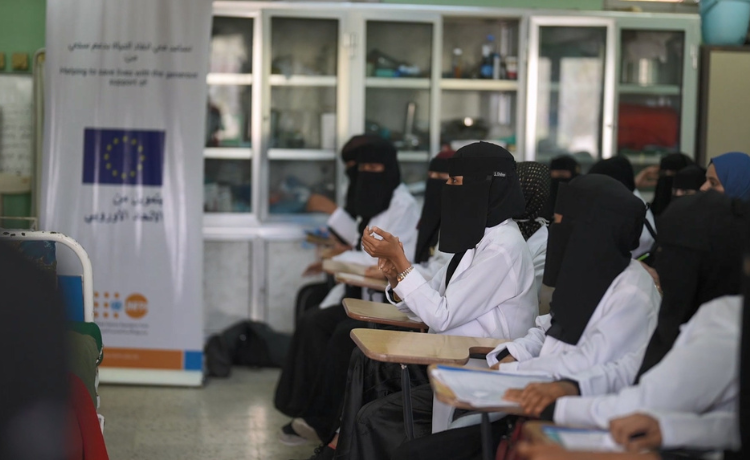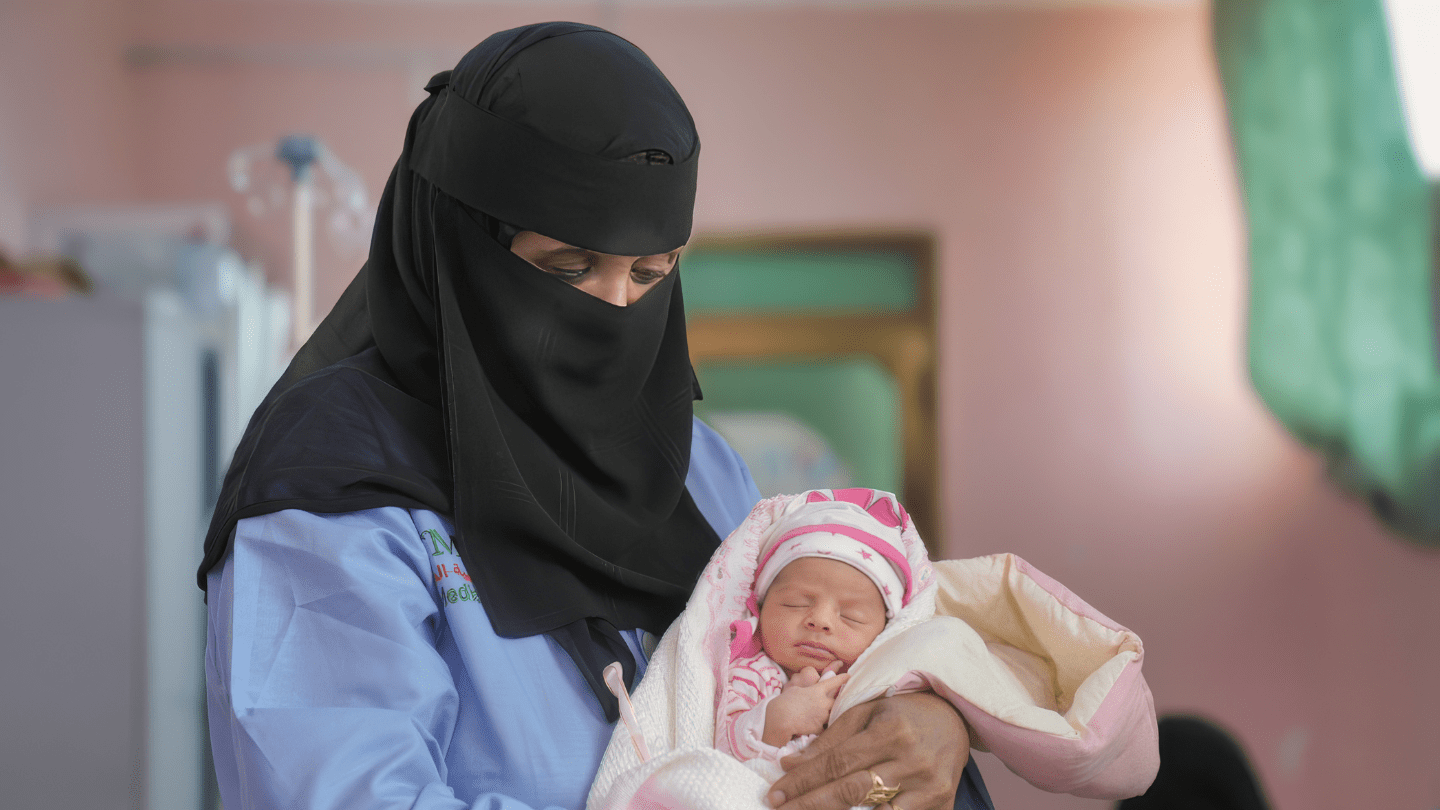Al Hudaydah, Yemen – “I will walk through mud, ride through floods and fight against all odds – because every birth should be a story of joy, not sorrow,” said Nora. One of only four skilled midwives on the island of Kamaran, in Al Hudaydah Governorate. Nora works at a UNFPA-supported health centre that serves some 5,000 women and girls across three villages.
Despite improvements in recent years, Yemen still has one of the highest maternal mortality rates in the region, at 183 maternal deaths per 100,000 live births. The national healthcare system has been stretched to breaking point after years of conflict, repeated climate disasters and a volatile economic situation. Some forty per cent of health facilities are partially functioning or completely out of service because of shortages in staff, funds, electricity, medicine and equipment, leaving millions without adequate care.
As humanitarian funding is slashed across the world, life-saving services like those offered in Kamaran Island are being severely pared back.
As a result, health facilities shutter and untold numbers of health workers lose their jobs – just as millions of people are in urgent need of their help. Yet as outlined in a new UNFPA initiative, there is vast evidence of a simple, life-saving and cost-effective solution: Training, employing and deploying more midwives.

Nora is one of only four skilled midwives on the island of Kamaran, in Yemen’s Al Hudaydah Governorate © UNFPA Yemen
1) The world risks a rollback on maternal health progress
Women and newborns in fragile and conflict-affected settings are twice as likely to die in pregnancy and childbirth, and account for over 60 per cent of maternal deaths globally.
Deep funding cuts will only exacerbate these numbers, as the already alarming shortage of some 900,000 skilled midwives across the global is likely to grow.
In Yemen, the situation is even more severe, where six out of ten births take place without a midwife and four out of ten women don’t receive antenatal care.
For Kamaran Island, the island’s dire lack of resources means that women with high-risk deliveries must take a boat across treacherous waters to the nearest hospital, followed by a long ambulance ride.
Nora recalled a woman who went into labour with severe complications while on the nighttime boat transfer: With no equipment, Nora delivered the child safely, and both mother and baby survived.
2) Because job losses will slash survival rates for millions of women and girls
Midwives are often the only health workers available in humanitarian settings – supporting safe deliveries, managing complications, offering contraception and caring for survivors of violence. When funding disappears, midwives can no longer work, health centres close and lives are lost.
The lack of funds means UNFPA can’t continue supporting the Kamaran health centre, costing Nora her job and placing the lives of many in her community in danger.
Sadly, her case is far from an anomaly: Across Yemen, UNFPA will no longer be able to train or employ more than half of the 1,492 midwives planned for 2025, meaning over 590,000 women of childbearing age will lose access to a midwife, and some 2.3 million people will be impacted overall.

By the end of 2024, 139 midwives had graduated from the UNFPA-supported institutes and were sent to rural areas most in need across Yemen. ©UNFPA Yemen
3) They are cost-effective, life-saving healthcare
Studies have shown that every $1 invested in midwifery yields up to $16 in returns, in lives saved, stability ensured and economies boosted.
In 2020, UNFPA established a series of three-year training programmes at seven institutes in remote and hard-to-access areas, where rates of maternal and newborn deaths in Yemen are the highest.
Naseem, 28, is a graduate of the initiative. She grew up in the village of Al-Haddab, in the Sana’a Governorate, where her mother encouraged her to work hard and study medicine. “Thanks to her, I was able to finish high school, which was the first step toward fulfilling my long-held dream: To become a doctor.”
But life threw many challenges in Naseem’s path, especially when her husband lost his job after Yemen's economy collapsed. “I was the sole provider for our family. I worked as a teacher to support us, but my dream of becoming a doctor never left my heart.”
It was a commitment that would prove well founded when she heard of the UNFPA programme. “I received a call about a training opportunity to become a rural midwife. Despite the obstacles – including family disagreements as I became busier – I was determined. This training wasn’t just a chance for me to work; it was my way of proving myself, saving lives in my village, and improving my children’s futures.”
By the end of 2024, 139 midwives had graduated from the UNFPA-supported institutes and were sent to areas most in need – an initiative that is not only saving lives, but empowering women and contributing to healthier communities.
However, lack of funding has halted these trainings for more than 100 midwifery students and 100 new students will lose out from enrolling in 2025.
“Cutting funding for humanitarian midwifery services puts women and their babies in harm’s way,” said Dr Natalia Kanem, UNFPA’s Executive Director. “We cannot fail midwives; we need to find ways to support their essential work.”


